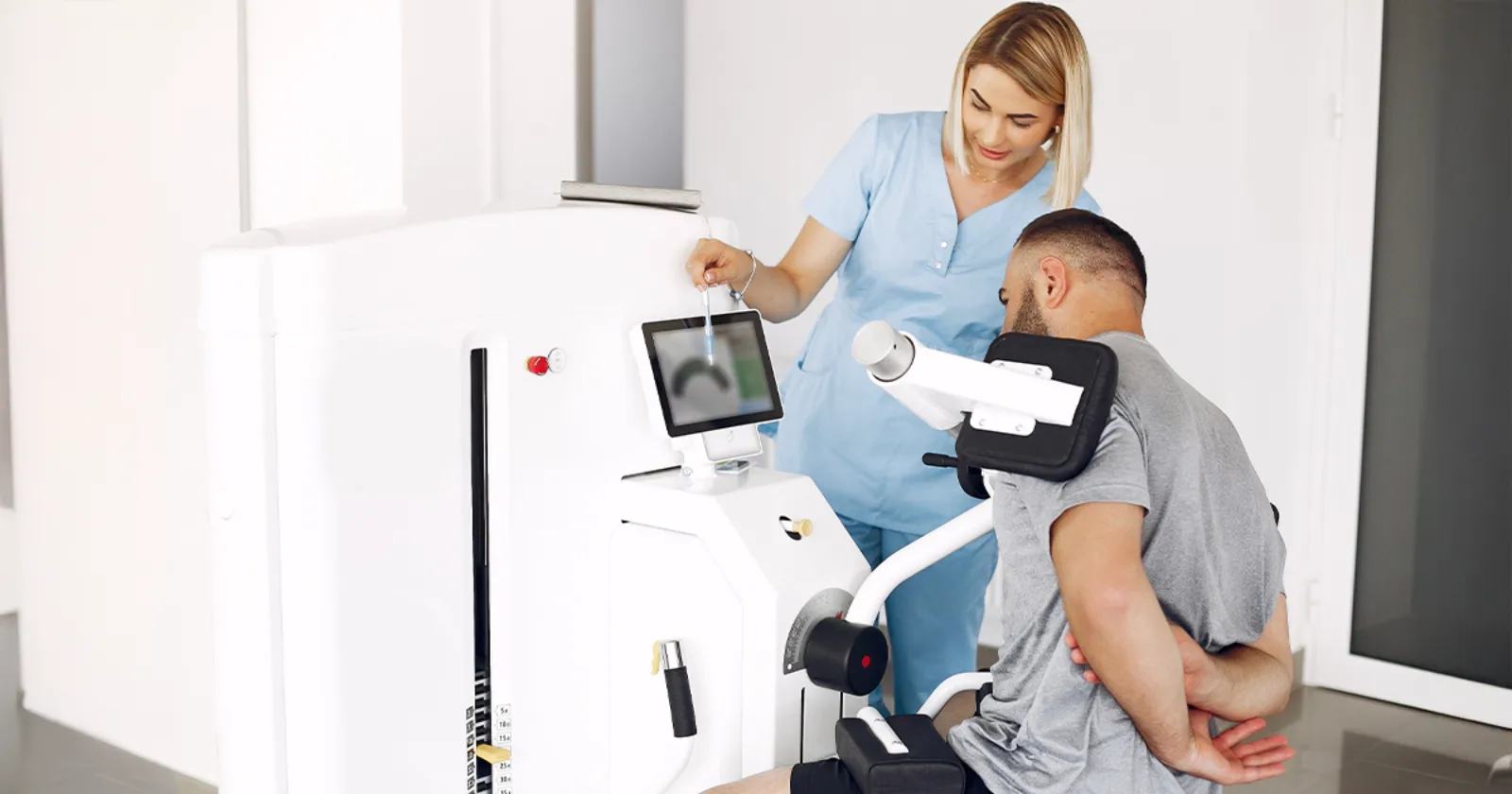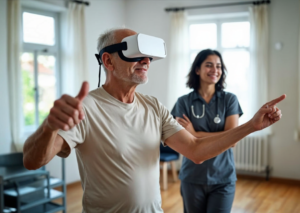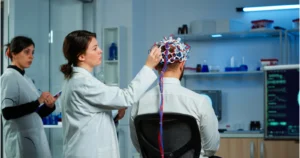Book Appointment Now

Revolutionizing SCI Rehab with Artificial Intelligence
Spinal cord injuries (SCIs) represent a significant challenge in modern healthcare, often resulting in profound physical and psychological impacts on patients. The rehabilitation process for SCI patients is complex and multifaceted, traditionally relying on generalized approaches that may not fully address individual needs. However, the advent of artificial intelligence (AI) is poised to transform this landscape, offering unprecedented opportunities for personalized rehabilitation strategies.
The Current Landscape of SCI Rehabilitation
Before delving into AI’s transformative potential, it’s crucial to understand the existing challenges in SCI rehabilitation:
- Standardized Protocols: Conventional rehabilitation programs often employ a one-size-fits-all approach, which may not adequately address the unique needs of each patient.
- Limited Adaptability: As patients progress, their rehabilitation requirements evolve. Traditional methods may lack the agility to adjust in real-time, potentially impeding optimal recovery.
- Resource Constraints: Rehabilitation can be resource-intensive, both in terms of cost and specialized care accessibility, particularly in underserved areas.
- Intermittent Progress Tracking: Conventional rehabilitation often relies on periodic assessments, which may not capture nuanced changes in a patient’s condition or progress.
AI technology, with its capacity for data analysis, pattern recognition, and real-time adaptability, presents a compelling solution to these longstanding challenges.
AI-Driven Personalization in SCI Rehabilitation
The integration of AI into SCI rehabilitation protocols offers a range of benefits that can significantly enhance patient outcomes:
- Customized Exercise Regimens – AI algorithms can analyze a patient’s physical capabilities through data collected via wearable sensors, robotics, and motion-capture technologies. This analysis enables the creation of highly personalized exercise programs that evolve in tandem with the patient’s progress, optimizing recovery potential while minimizing the risk of further injury.
- Continuous Monitoring and Feedback – AI-powered devices enable real-time monitoring of rehabilitation progress. This constant stream of data provides invaluable insights to both therapists and patients, allowing for immediate adjustments to therapy protocols. For instance, when used in conjunction with robotic exoskeletons, AI can detect subtle imbalances or weaknesses, prompting instant corrections to improve efficacy and safety.
- Predictive Analytics for Recovery Trajectories – By processing historical and real-time data, AI can forecast individual recovery trajectories. This predictive capability assists in setting realistic goals and milestones, enhancing patient motivation, and enabling early intervention if progress deviates from expectations.
- Cognitive Rehabilitation through AI and Virtual Reality – For patients experiencing cognitive impairments following SCI, particularly in cervical injuries, the combination of AI and virtual reality (VR) offers immersive, adaptive cognitive rehabilitation experiences. AI algorithms can modulate the difficulty of VR-based cognitive exercises in real time, ensuring optimal challenge levels for each patient.
- AI-Enhanced Pain Management – Chronic pain, a common complication in SCI patients, can be more effectively managed through AI-driven interventions. By identifying patterns in patient behavior, medication usage, and pain levels, AI can inform more targeted pain management strategies, potentially reducing reliance on pharmacological interventions.
- Expanding Access through Tele-rehabilitation – AI-powered telerehabilitation platforms are democratizing access to specialized care. These systems enable remote monitoring and guidance, making high-quality rehabilitation services available to patients in geographically isolated or underserved areas.
- Psychological Support and Monitoring – The psychological impact of SCI is profound and often under-addressed. AI chatbots and virtual assistants can provide continuous emotional support, offering encouragement and monitoring for signs of depression or anxiety. This technology can complement human care, ensuring timely intervention when professional mental health support is needed.
The Future Landscape of AI in SCI Rehabilitation
As AI technology continues to evolve, its potential applications in SCI rehabilitation are expanding. Future developments may include:
- Integration of multi-modal data streams, including genetic and social factors, for even more precise personalization of rehabilitation protocols.
- Advanced AI-driven robotics providing intelligent, adaptive assistance in mobility training.
- Decreased costs of AI technologies, broadening access to personalized rehabilitation for a wider patient population.
Conclusion
Artificial intelligence is not just augmenting traditional SCI rehabilitation approaches; it’s fundamentally redefining the field. By offering unprecedented levels of personalization, real-time adaptability, and accessibility, AI is opening new avenues for recovery that were previously unattainable. As these technologies continue to advance, they promise to significantly enhance the quality of life for individuals living with spinal cord injuries, marking a new era in rehabilitation medicine.
While challenges remain in terms of technology integration, data privacy, and clinical validation, the potential benefits of AI in SCI rehabilitation are profound. As researchers, clinicians, and technologists continue to collaborate, we can anticipate even more innovative applications that will further transform the landscape of SCI care and recovery.



